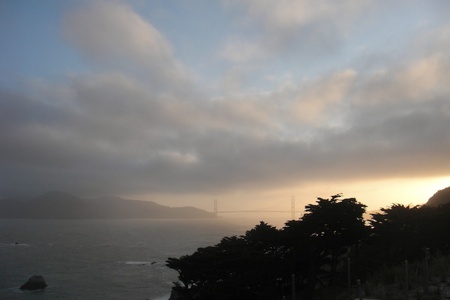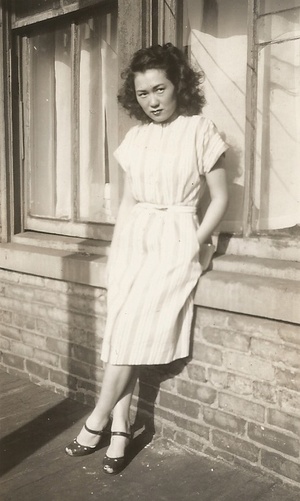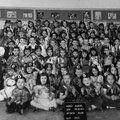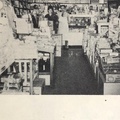Afterward, I thought I’d tour the city. San Francisco is easily the most beautiful city in the United States, if not the world. I had a few hours to kill before heading toward the airport, and had made a short list of things I wanted to see. At this early hour, about half past five in the morning, I would have the run of the streets and boulevards, warm with sunrise, empty but not lonesome.
I first cut down Great Highway to Lincoln, and zigzagged up and down among the row houses of the Sunset District. I’d admired photographs of this section of the city for its vast flatness. In a city known for steep hills and winding roads, the Sunset sits on the outskirts, bordering the Pacific, the largest section of the city, flat as can be on a solid gridiron plan.
I went up and down and back and forth between Lincoln, Sunset, Noriega, and Great Highway. I enjoyed the juxtaposition of chaotic power lines and cable car cables against the orderliness of the street grid. Few were awake and about, and it gave me the space to imagine myself in a noir novel where my character had just scattered his grandmother’s ashes at sea and decided to take a drive. Roll credits.
Back up Great Highway, I curved around to Point Lobos Avenue and turned into Fort Miley, which offers breathtaking views of the Pacific meeting the Bay. At this hour the Golden Gate Bridge distantly floated in a haze of morning fog. I got out of my car, walked to a big rock on the cliff’s edge, climbed it, and mimicked the Tai Chi movements I had once learned as part of a theatre troupe. I hadn’t exercised these forms since exiting the troupe many years prior, and had not planned on it. The ensemble learned them in rehearsals as a method of moving meditation and warm-up. Somehow, the majesty of this morning brought them back. I came to a few minutes later as a woman in what looked like a space suit jogged past.

At this hour the Golden Gate Bridge distantly floated in a haze of morning fog. (Courtesy of Erik Matsunaga)
I continued down Clement Street through the Richmond, on my way toward downtown. At 12th Street I noted a corner store sign advertising Fresca and liquor. Fresca. When I was a kid my grandmother’s basement refrigerator was always stocked with it as it was my grandfather’s favorite soft drink. Thus, it had become my favorite soft drink. And then it fell from popularity and became hard to find. But here it was, an old Fresca sign. I wondered if they still carried Fresca, but the shop was not open this early.
The hills of downtown washed my face fresh as I juggled my memory of major street names from the maps I’d studied, trying to find Caffe Trieste, a coffee house in North Beach. I’d once read that Francis Ford Coppola had written the screenplay for The Godfather here, and, having learned it was still extant, put it on my list of things to see. After some backs and forths and wrong ways down one ways and going up the same streets two, three times, I found it. I parked, walked in, and ordered a large coffee. And then I walked out. Pretty anticlimactic. But such a simple act made me feel like a regular. I didn’t need to soak it up. Coppola didn’t need to soak it up. Every other San Franciscan walking in at 6 am didn’t need to soak it up. It’s a coffee shop. I just wanted to be a part of it. And I was. And that was that.
I headed back to my motel in Japantown, a block from where my grandmother once lived while attending beauty school pre-WWII. San Francisco offered her a moment off her family’s Central California farm, even if that freedom meant she still couldn’t find housing outside the Japanese district. She worked as a domestic while attending school, and as a beautician trainee. At week’s end, should her tips offer a bit extra after paying room and board, she’d splurge on a Thomas’ English Muffin slathered with butter. “Nooks and Crannies,” she’d called them, boy were they a treat.
It was the last thing she requested before passing, I heard. A Thomas’ English Muffin. She had been out for two days; we thought she was a goner. And then she woke. And she asked for some Nooks and Crannies, with butter. “What?” “An English Muffin,” she said. “A Thomas’ English Muffin, it’s gotta be a Thomas’.” And then she told the story. My uncle went to the grocery and picked some up. He toasted one and buttered it. She savored it. I imagine she dreamed of the freedom this most beautiful city in the world provided her so briefly seventy years thence.
She ate both sides, lay back, closed her eyes, and never woke up.
© 2013 Erik Matsunaga






